Curriculum
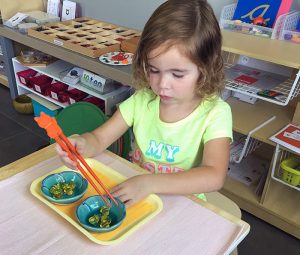 Blue Lotus Montessori early childhood curriculum is based on the Montessori method. Maria Montessori observed that children follow an inner guide that she called the inner teacher. The child learns to satisfy her developmental needs by following the prompts of her inner teacher. Therefore, at Blue Lotus Montessori, we aim at facilitating this work that takes place inside the child, helping her achieve her highest potential.
Blue Lotus Montessori early childhood curriculum is based on the Montessori method. Maria Montessori observed that children follow an inner guide that she called the inner teacher. The child learns to satisfy her developmental needs by following the prompts of her inner teacher. Therefore, at Blue Lotus Montessori, we aim at facilitating this work that takes place inside the child, helping her achieve her highest potential.
The beauty of the Montessori curriculum can be seen in our classroom. Our environment is clean, orderly, and attractive to the child. On the shelves are activities that appeal to her individual needs and interests. There are no toys, only real child-sized furniture, tools, and utensils. It is in this environment that the child learns to be independent and do things for herself.
Below are the main areas of our curriculum:
Practical Life
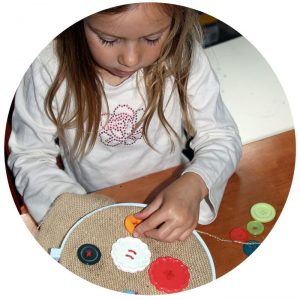 Practical life is the area of learning that allows the child to practice skills used in everyday life. It is the area a child is exposed to when first introduced to the classroom. Practical Life provides proper stimulation for many skills and activities, and works in accordance with the sensitive periods of child development.
Practical life is the area of learning that allows the child to practice skills used in everyday life. It is the area a child is exposed to when first introduced to the classroom. Practical Life provides proper stimulation for many skills and activities, and works in accordance with the sensitive periods of child development.
Sensorial
Maria Montessori believed that children, during the first six years of their life, are driven by an i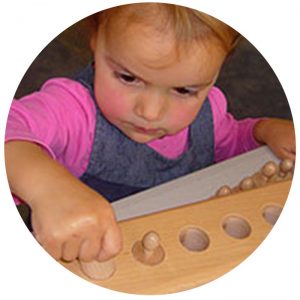 nnate love for the environment. This love is indeed the reason why they are so sensitive to everything and why their minds absorb so many impressions from their surrounding. Montessori called this period the sensitive period of development, and she made sensory education an integral part of the Montessori method.
nnate love for the environment. This love is indeed the reason why they are so sensitive to everything and why their minds absorb so many impressions from their surrounding. Montessori called this period the sensitive period of development, and she made sensory education an integral part of the Montessori method.
Language
I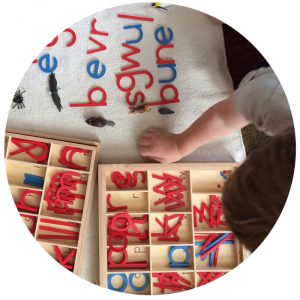 n the Montessori environment, reading is not an intellectual process as it is normally taught in the traditional school. On the contrary, it is a process that involves all the senses. Indeed, the training of the senses forms the basis for the Montessori reading program. At Blue Lotus Montessori, we have a variety of materials and manipulatives to teach the child how to read.
n the Montessori environment, reading is not an intellectual process as it is normally taught in the traditional school. On the contrary, it is a process that involves all the senses. Indeed, the training of the senses forms the basis for the Montessori reading program. At Blue Lotus Montessori, we have a variety of materials and manipulatives to teach the child how to read.
The method we use to teach reading and writing is the phonic one. The phonics
method develops the child’s phonemic awareness, helping her understand how spoken words can be broken down into individual tiny sound parts known as phonemes. Research has found that good readers know the letter sounds and know how to separate and blend the sounds in a word. These are the fundamental steps needed for the child to learn reading and spelling.
Math
 “…mathematics is so often held to be a scourge rather than a pleasure in school programs. Most people develop” mental barriers” against it. Yet all is easy if only its roots can be implanted in the absorbent mind” Maria Montessori
“…mathematics is so often held to be a scourge rather than a pleasure in school programs. Most people develop” mental barriers” against it. Yet all is easy if only its roots can be implanted in the absorbent mind” Maria Montessori
In our classroom, math preparation starts very early. Children between the ages of 2 ½ to 3 years are indirectly introduced to some basic principles of math. While engaging in activities from the sensorial and practical life area, for instance, they learn to order, classify, categorize, and see patterns and shapes. They are given the opportunity to explore math in a concrete way, using hands-on materials.
Science and Geography
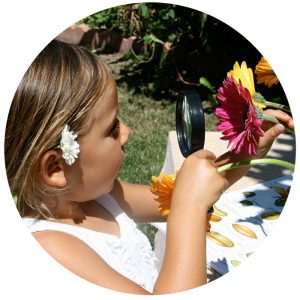 Our classroom is equipped with lots of science materials divided into topics that include astronomy, botany, chemistry, physics, and zoology. It also contains geography materials that help the child understand the physical world and her place in it. There are lots of hands-on activities in this area, such as puzzle maps, globes, flags, land and water forms, etc. We also learn about different cultures, their customs and traditions.
Our classroom is equipped with lots of science materials divided into topics that include astronomy, botany, chemistry, physics, and zoology. It also contains geography materials that help the child understand the physical world and her place in it. There are lots of hands-on activities in this area, such as puzzle maps, globes, flags, land and water forms, etc. We also learn about different cultures, their customs and traditions.
Movement
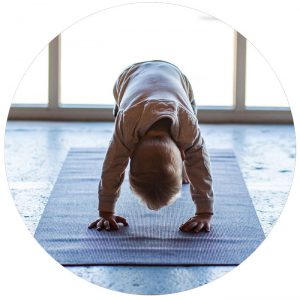 “Movement, or physical activity, is thus an essential factor in intellectual growth, which depends upon the impressions received from outside. Through movement we come in contact with external reality, and it is through these contacts that we eventually acquire even abstract ideas.” Maria Montessori
“Movement, or physical activity, is thus an essential factor in intellectual growth, which depends upon the impressions received from outside. Through movement we come in contact with external reality, and it is through these contacts that we eventually acquire even abstract ideas.” Maria Montessori
Movement is quite an important part of our curriculum and it is incorporated in all areas of the classroom. The child is free to move at will. She is always active and able to choose her own activities. It is through movement that the child refines her fine and gross motor skills. Movement also benefits the child by increasing her ability to engage and concentrate.
Art
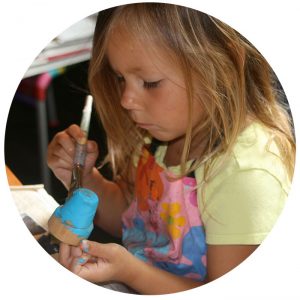 Children love to express themselves through art. Therefore, art materials are available in the art area of our classroom year round. In addition, we also teach art appreciation by studying the work of famous artists.
Children love to express themselves through art. Therefore, art materials are available in the art area of our classroom year round. In addition, we also teach art appreciation by studying the work of famous artists.
Music
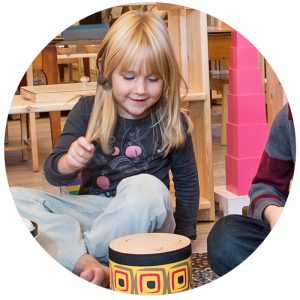 We expose our students to music everyday by listening to the composer of the month, by playing music while walking on the line, or by singing, dancing, and playing rhythmic instruments.
We expose our students to music everyday by listening to the composer of the month, by playing music while walking on the line, or by singing, dancing, and playing rhythmic instruments.
Spanish
 There are many ways in which we incorporate Spanish in our curriculum. For instance, we speak everyday phrases and expressions during our daily activities, we work with nomenclature cards, we sing songs, and we study the alphabet, the numbers, and vocabulary words.
There are many ways in which we incorporate Spanish in our curriculum. For instance, we speak everyday phrases and expressions during our daily activities, we work with nomenclature cards, we sing songs, and we study the alphabet, the numbers, and vocabulary words.
Mindfullness
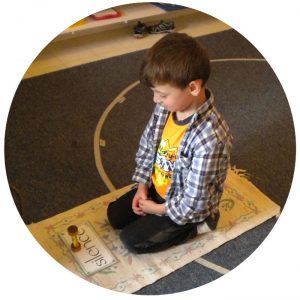 Practicing mindfulness in a daily basis is very helpful to the child’s development. In fact, many of the traditional Montessori activities in our classroom helps increase mindfulness. Yet, we do work on improving the ability of the child to concentrate by practicing yoga, meditation, silence, and purposeful movement.
Practicing mindfulness in a daily basis is very helpful to the child’s development. In fact, many of the traditional Montessori activities in our classroom helps increase mindfulness. Yet, we do work on improving the ability of the child to concentrate by practicing yoga, meditation, silence, and purposeful movement.
